
Pulsar generators are known for being not only easy to use and durable, but also impressively affordable. That makes them a favorite among backyard DIYers, contractors, emergency preppers, and anyone else in need of portable power. With cutting-edge features on every generator, you can be sure you’re getting a quality power source that will last for years to come.
To help you find the best Pulsar generator for your power needs, we considered a number of features available in the Pulsar lineup. First, we considered whether the generator is a conventional generator or an inverter generator, as well as whether it’s designed as a portable generator or a standby power unit. Of course, how much running power and surge power each generator could put out was also a major factor in our survey. We also looked at the type of fuel each Pulsar generator uses and how long it can run for on a standard fuel tank.
We spent tens of hours researching Pulsar generators, reviewing technical specifications as well as Pulsar generator reviews from users and industry experts. The result is our pick of the 5 best Pulsar generators with the Pulsar PG5250B as our Editor’s Choice. Continue reading for detailed reviews of each generator, as well as our buying guide, which covers everything you need to know about choosing a Pulsar power supply. Finally, we sum up our three overall favorite Pulsar generators for every use.
This conventional dual-fuel generator from Pulsar is the ideal choice for parking outside your house during an extended outage. It’s easy to keep propane around the house to power it so it doesn’t go bad, and the 3,850 watts of running power on propane is more than enough to power your essential appliances until the power comes back on.
Still, the dual-fuel nature and portable design of this generator allows it to be much more versatile than for emergency use only. The generator sports a 12-hour runtime at half-load when running on gasoline, which ensures that stopping to refuel is never an inconvenience. On top of that, the generator comes with a 30-amp RV-ready outlet so that you can use it for camping and road trips.
Even better, Pulsar included a 120-volt/240-volt twist-lock outlet on this generator, which allows it to be used for heavy-duty applications. Although it’s quite heavy to move around – the generator weighs 115 pounds – this outlet and the long runtime makes it a great candidate for powering construction sites. A digital hour meter allows you to keep track of how much power you’re using and how much fuel you have left in the tank.
The only real downside to this generator is the noise. 78 dB is loud enough that you’ll want to wear ear protection when using the generator. If you live in a neighborhood, you’ll want to be sure only to run the generator during daytime hours when loud noises aren’t as problematic.
This 2,000-watt inverter generator is one of the most affordable options in its size class and it doesn’t compromise much on features. To start, the generator offers an eight-hour runtime at 50% load – enough to run a few appliances or tools for an entire workday without stopping to refuel. While it doesn’t have an electric starter, users were happy with the recoil starter and found that it is very reliable. The 80cc OHV engine is highly reliable and users typically report running it regularly for several years or more without any problems.
The generator panel is simple, but comprehensive. There are indicator lights to warn you when the oil is running low or you are close to overloading the generator. In addition, an economy switch can help you lengthen the generator’s runtime when you’re not using all of the available 1,600 watts. Helpfully, Pulsar included a single USB port on this generator so you can take advantage of the inverted power and charge your smartphone, as well as a 12-volt DC outlet for charging a battery.
The only thing that this generator lacks compared to other 2,000-watt generators is more noise insulation. At 59 dB, this is one of the noisier generators in its size class. In fact, it makes almost 10 times more noise than the Honda generator of the same size – although, to be fair, the Honda generator costs three times as much.
The PG10000B16 is essentially a larger version of Pulsar’s dual-fuel PG5250B, designed for those applications where you simply can’t have enough power. To get it out of the way – yes, this generator is loud. You’ll need ear protection when operating near it, and your neighbors won’t be thrilled with you if you use it frequently without warning.
Excepting the noise, though, there’s a lot to be said for this hefty generator. Pulsar designed it so that you can switch between gasoline and propane fuel without turning off the engine, so you can essentially extend the already long 12-hour runtime to get you through a full day at full power. Not surprisingly, this generator guzzles gasoline – the 6.6-gallon tank can be expensive to fill.
The outlets on this generator are designed to tap into the massive power output. You’ll find four 120-volt AC outlets rather than the typical two, as well as a 50-amp RV-ready outlet and a 240-volt capable twist-lock outlet. The 12-volt DC outlet is able to trickle charge batteries for more efficient charging. Helpfully, a digital hour meter helps you keep track of how much power you’re drawing out of all these outlets so you don’t accidentally overdraw the engine.
The generator is mounted on a steel cage with 10-inch never-flat wheels that allow it to be easily rolled around your work area or home. However, if you do need to lift this into a truck, be prepared – you’ll need at least four people to safely lift the 209-pound frame.
This small two-stroke conventional generator from Pulsar is for people who need just a small amount of power and don’t want to pay for more than that. At just $140, this generator is within the reach of every budget. The 850 watts of running power is just enough for one or two appliances or power tools, so it’s ideal for yard work or a small outdoor event.
The generator uses a relatively noisy and inefficient two-stroke engine, which is part of what allows it to be so cheap. The 65-dB noise output isn’t overly loud, but it’s almost 10 dB louder than the PG2000iSN, which puts out around twice as much power. Still, the nine-hour runtime at 50% load is reasonably long – this is due in part to the relatively large 1.1-gallon fuel tank.
The generator’s panel is low on bells and whistles, as you might expect. There’s no electric starter and no 30-amp outlet for connecting more current-hungry tools and appliances, although most users didn’t find this to be limiting. More important, this generator doesn’t have a low-oil shutoff or indicator light. You’ll need to carefully track how much you use the generator and preemptively replace the oil to avoid engine damage.
Perhaps the biggest drawback to this generator is its size. It weighs 35 pounds and doesn’t have wheels – while that’s still lighter than the rest of Pulsar’s generator lineup, it’s significant for a generator that provides less than 1,000 watts of continuous power.
The cream of the Pulsar crop, the PG4000iSR pushes the limits of what an inverter generator can do. Currently, this generator is one of the most powerful inverter generators available – very few offer more than 4,000 watts of surge power, and almost none offer it at such a reasonable price tag.
Even more impressive, this generator sports a 15-hour runtime at a 50% load. That means that even if you want to draw this generator’s full 3,500 watts of running power all day, you can do it without having to stop and refuel. On top of that, Pulsar outfitted this generator with an electric start that can be controlled remotely. If you accidentally forget to turn the battery off when you’re done using the generator, don’t worry – you’ll find a recoil starter on the side of the generator as a backup.
The generator’s panel anticipates the needs of a wide variety of uses, offering a 30-amp RV-ready outlet in addition to the standard 20-amp duplex. You also get a USB charging port to use a few watts for charging your small electronics.
This generator can be a little bit noisy at 63 dB, but it’s worth underscoring how quiet that is for a generator of this size. The PG2000iSN produces 59 dB of noise while outputting half the power, while the PG5250B produces 78 dB of noise while providing only a little extra juice.
To top it all off, users loved the rolling suitcase-style design of this generator. It makes carry simple, even if lifting the 92-pound frame requires two people.
Now that you’ve learned more about our five favorite Pulsar generators, how do you choose the one that’s right for you? In our Buying Guide, we’ll dive deep into why Pulsar generators stand out for every use and highlight the important things you need to consider when choosing a Pulsar generator.
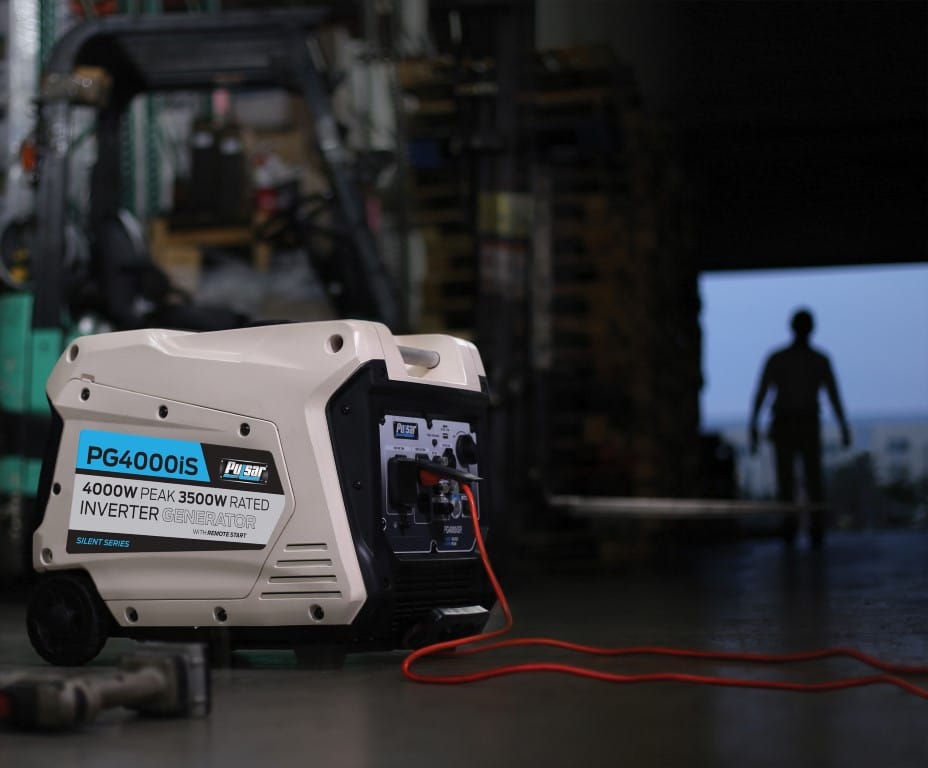
Talk to anyone who has owned a Pulsar generator, and you’re likely to hear only good things. Pulsar generators are at the front of the pack when it comes to reliability and durability, two of the most important qualities in any generator. That’s thanks to Pulsar’s focus on producing high-quality engines that can stand the test of time and won’t break down from simple wear and tear.
On top of that, Pulsar focuses on introducing cutting-edge technologies into their generators. Many of Pulsar’s classic generators have transitioned from conventional power generation to inverted power, which has made them quieter, more efficient, and more suitable for powering today’s electronics.
What really puts Pulsar over the top, though, is that the company doesn’t charge an arm and a leg for its products. You can get a top-of-the-line generator for a price you can afford. While Pulsar might not be a household name like Honda or Yamaha, in this case that’s a good thing for anyone in need of a budget-friendly power source.
Still, Pulsar generators do have a few drawbacks. They tend to be louder than more expensive models, which can be a problem if you need to run your generator at night or in a crowded neighborhood or campground. In addition, Pulsar’s offerings of inverter generators are still relatively limited in variety. However, that may change as the technology continues to improve and get cheaper.
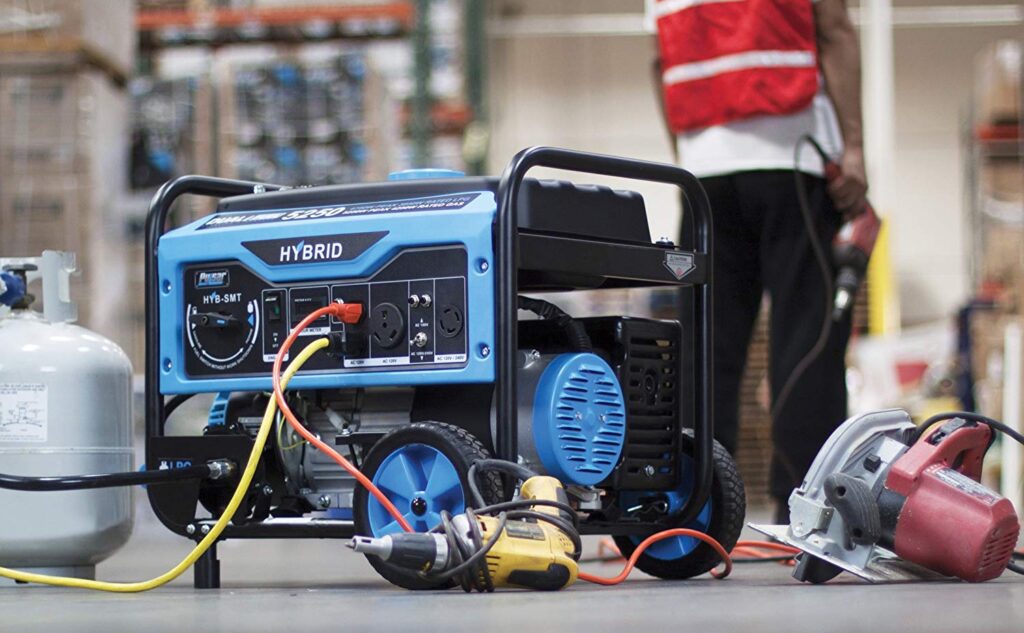
Inverter generators like the PG2000iSN and PG4000iSR convert AC power to DC and back to AC in order to clean it. That allows you to use power from these generators for sensitive electronics like smartphones and computers. In addition, inverter generators tend to be quieter and more fuel efficient, and are capable of running in parallel with another Pulsar inverter generator. All of this makes inverter generators a popular choice among new generator buyers.
However, inverter generators tend to cost significantly more than conventional generators for the same amount of power output. If you only need your generator to power large appliances or power tools and noise isn’t an issue, a conventional generator can save you some money.
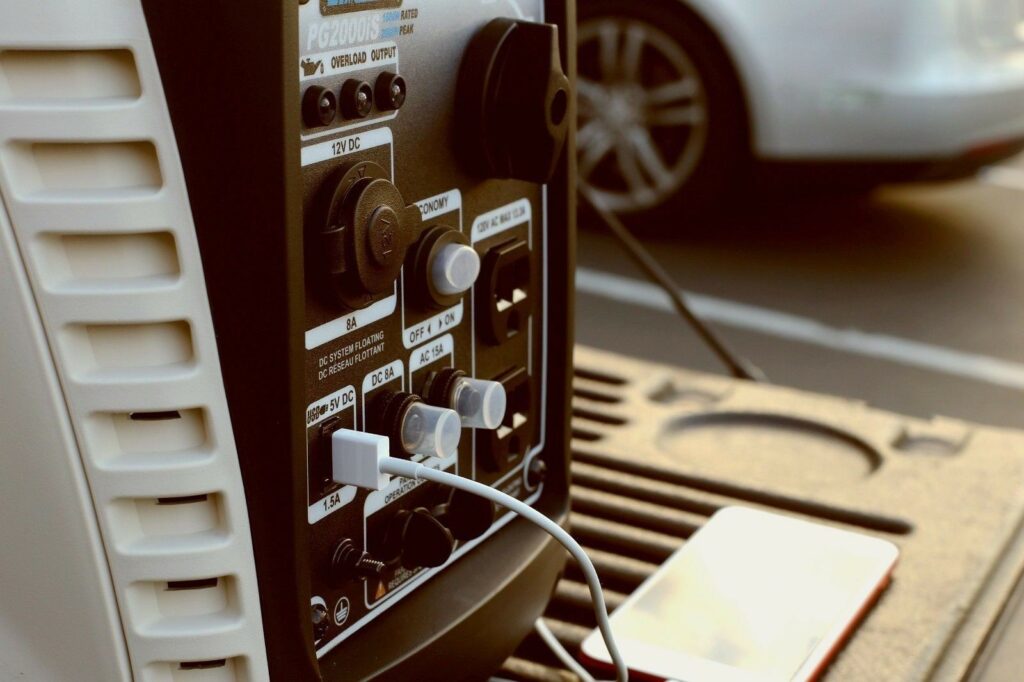
In general, 2,000 watts is enough to power a handful of tools or anything you might have with you on a camping trip. 3,000 to 5,000 watts of running power, available from the PH5250B, which is actually considered to be the best generator for RV use among other 5,000-watt generators, and PG4000iSR, is suitable for a large RV with air conditioning or powering your home’s essential appliances during a power outage. Massive wattages like those available from the PG10000B16 are generally best for powering most of your house during an extended outage or for running a field construction site.
The fuel tank capacity and runtime of your generator play a big role in how you’ll be able to use it. Pulsar generators offer impressive runtimes of eight hours or more at 50% runtime, which is head and shoulders above much of the competition. Most notably, the PG4000iSR can run for a whopping 15 hours at 50% load – meaning you can run the generator for almost a full day when drawing all of its available 4,000 watts, no wonder that it is one of the best 4000-Watt generators, and don’t forget the fact that it is also considered to be the best remote start generator, which makes it super user-friendly.
Ultimately, how much runtime you need comes down to how you plan to use it. If you’re powering tools for work in your backyard or at a construction site, a few hours of runtime may be enough. On the other hand, if you need a generator to run your appliances during an extended power outage, longer runtimes will typically be more suitable and require you to turn off the power and refuel less often.
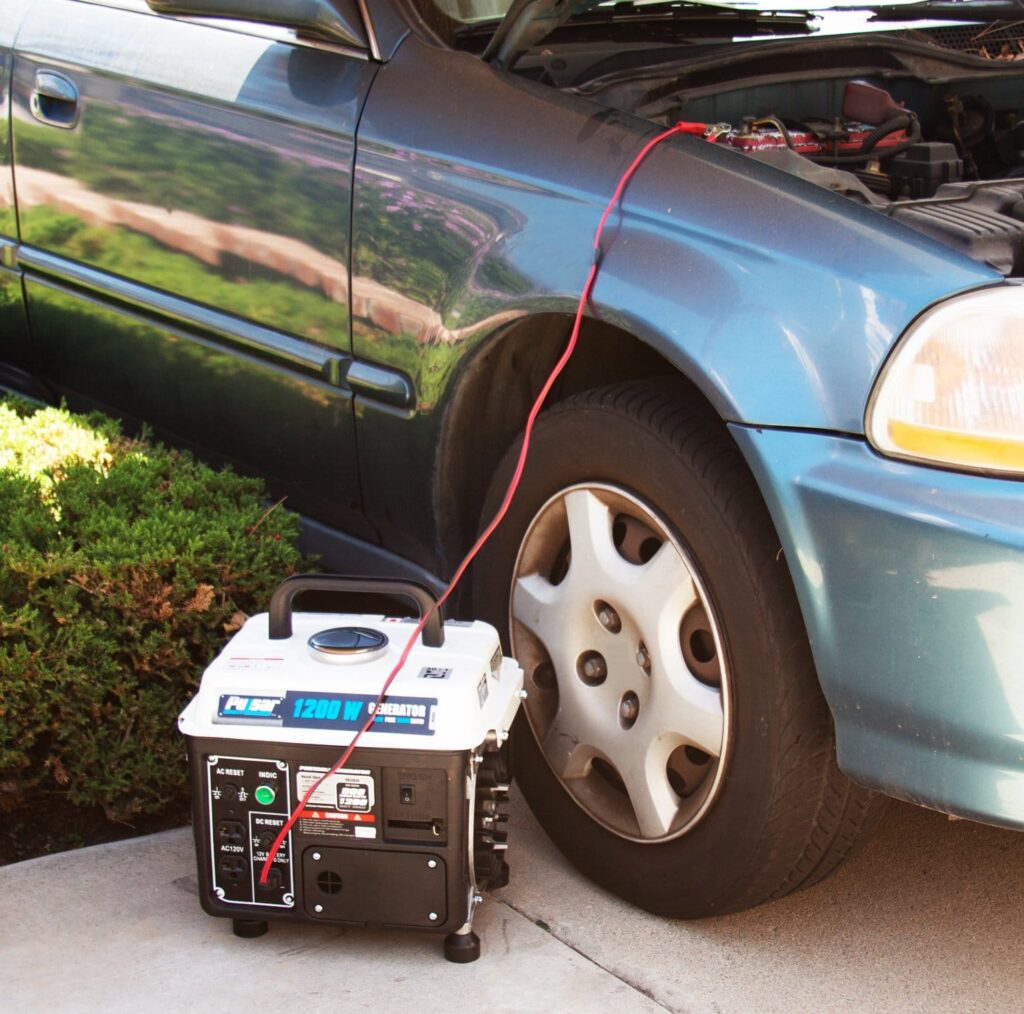
There are a few important things to keep in mind for maintaining an operating your generator:
Pulsar is known for making affordable generators. The PG 2000iSN costs around $400, while many comparable 2,000-watt inverter generators cost $600 or even over $1,000 in the case of Honda and Yamaha generators. The Pulsar PG10000B16 is notably more expensive, at $800, but even this is quite the steal when compared to similarly large, dual-fuel generators that cost well over $1,000, and it is also worth noticing that it rated as one of the best generators for a food truck and 10,000-Watt generators.
Our three overall favorite Pulsar generators are the PG5250B, the PG2000iSN, and the PG10000B16. The PG5250B is a moderately sized dual-fuel generator from Pulsar, which is ideal for a variety of uses including as a power source during extended outages at your home. Helpfully, it comes with an RV-ready outlet and a 240-volt outlet for heavy-duty applications. The PG2000iSN is a capable 2,000-watt inverter generator, priced much more affordably than many of its competitors. This generator is light enough to be truly portable, although we wished it was slightly quieter. Finally, our third pick is the PG10000B16. Pulsar designed it so that you can switch between gasoline and propane fuel without turning off the engine, so you can essentially extend the already long 12-hour runtime to get you through a full day at full power. No wonder it is considered to be one of the best portable generators.
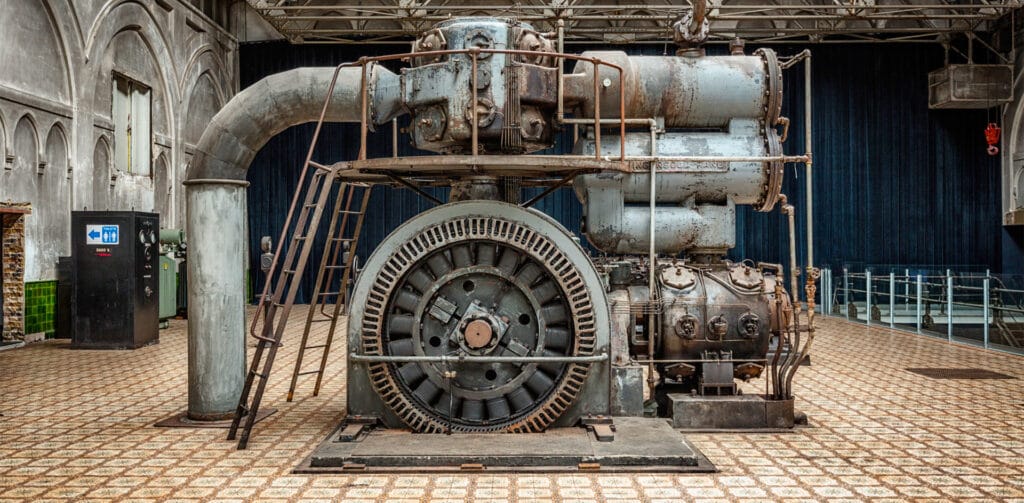
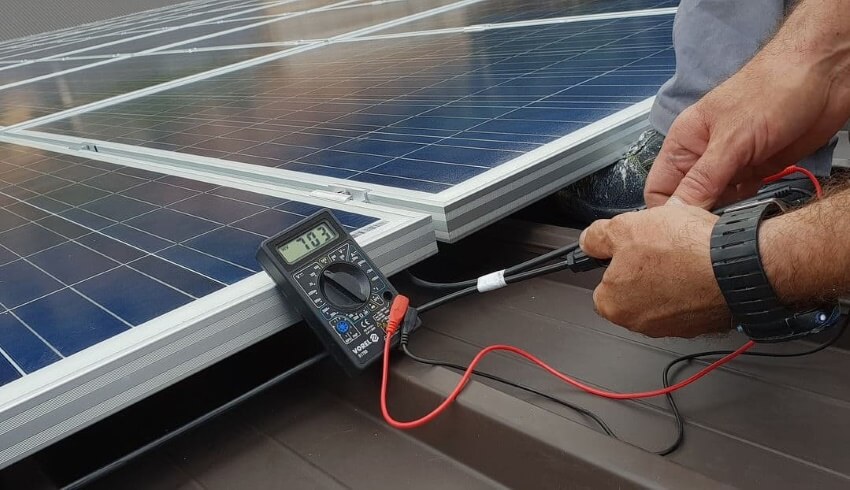
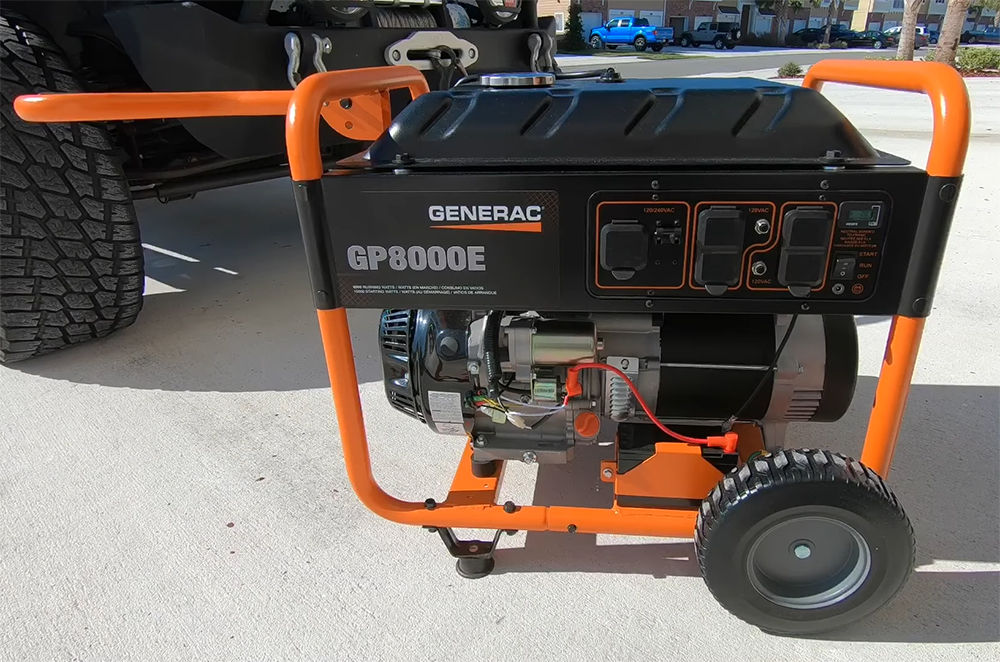


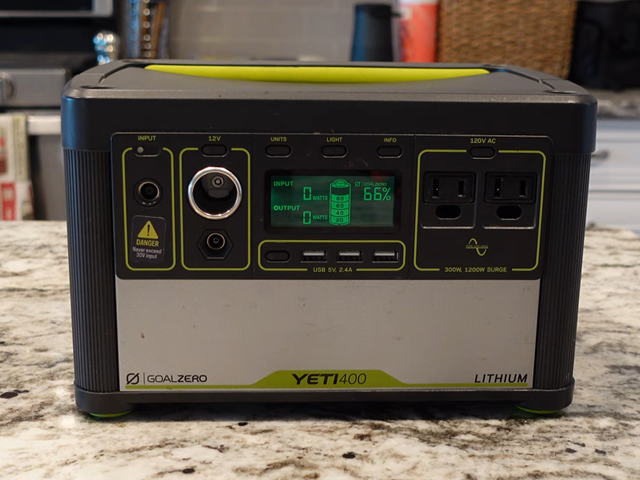
I’m wondering who manufactures engines used in Pulsar generators? Are they manufactured by the same brand?
A company in China that is called Ducar makes the Pulsar generator engines. This means that the generators and their engines are actually manufactured by the same company.
Aren’t Pulsar generators manufactured by Pulsar Products Inc., which is located in Ontario, California? Aren’t the generators manufactured there? However, the engines are really produced by Ducar, according to Pulsar’s website…
Hey guys, I have some troubles with my Pulsar PG7500 generator. Can somebody tell where the ac circuit breaker is?
It is located in the rear of the unit. A black box with a red handle on top of it. Lift the lid to expose the breakers, use a flat head screwdriver to move them around. If you have an older model, there might be two breakers, one for each side of the generator.
Thanks! You are my savior! I’ll try it now… Hopefully, everything will work out fine again soon.
So, it’s still unclear where Pulsar generators are made. Are they all made in China?
This company Pulsar Products Inc. makes these generators. They are produced in America. I mean, most of the designs are made in America, and the headquarters of Pulsar is in Ontario, California. However, as mentioned earlier, the engines for Pulsar generators are made in China.
Hi there! You’ve mentioned that these generators are under a one-year warranty. But how long do they usually last? It can’t be one year, right?
Portable generators are not as durable as stationary ones. I’ve read somewhere that for a quality portable generator, you’re likely to get anywhere from 1000-2000 hours of use. This will give you 10-20 years if you use it for 100 hours a year on average. I personally don’t believe it. However, my Pulsar works pretty well now, though I bought it around 2 years ago. There are some general rules that can help you get most of your generator in terms of its lifespan. Make sure to keep your generator dry and away from dust. This will help make sure your generator lasts longer.